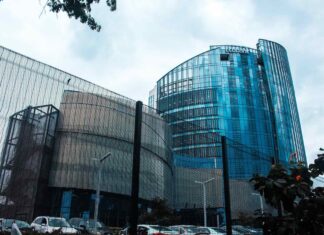Held in a pleasant, intimate setting of Ramada Hotel’s Zhongshan hall, the Unicom’s Blockchain Summit 2018 offered a number of interesting talks on the current development in blockchain technology and emerging token economy.
Are we going towards AI-governed blockchains?
Hayk Hakobyan’s take on the issue of governance offers a big picture overview of the problem and outlines directions toward AI-governed blockchains that will eventually enable us to solve real-world problems such as e-voting and intelligent decision making.
He points out problems with traditional blockchain systems such as Bitcoin and Ethereum that are caused by asymmetries in incentives for system improvements between developers, miners and users.
In the case of Bitcoin, new developers are not incentivized to improve the system as there is little value for them in doing so. As a result, there is a potential risk of a small number of veteran Bitcoin developers gaining too much power and being susceptible to bribery or being responsible for slowing the technological advancement of the Bitcoin ecosystem. At the same time, there is a risk of miners gaining disproportionate power over the system as well since high-volume miners are a small, concentrated group.
Ethereum plans to transition from PoW towards PoS system of governance. The system based on PoS addresses the possible centralization risk and the risk of disproportionate power accumulation observed in the Bitcoin network. However, the system is still overly reliant on Ethereum’s creator and there are few ways for incentivizing core system development.
New types of chains offering on-chain governance are emerging:
Tezos
Similarly to Ethereum, Tezos is a smart contracts platform. However, it also allows protocol upgrade through on-chain governance. The core idea behind Tezos system of governance is to incentivize developers (or anyone for that matter) to propose protocol changes. The developer submits a proposal for protocol update and at the same time requests compensation for their work. In effect, the power dynamics shifts toward the users and away from miners and core developers. In order for the suggested protocol changes to be implemented Delegated Proof of Stake (DPoS) consensus model comes to play, whereby token holders can choose delegates to represent their votes.
Dfinity
Dfinity offers similar system of governance as Tezos with the added possibility of applying changes retroactively. This essentially means that, apart from protocol updates, users have the power to back-edit the existing ledger when necessary. This is particularly useful in case of cyber-attacks.
Taking a step further, Hakobyan discusses other theoretical concepts of governance (such as Futarchy, Liquid Democracy and Quadratic voting). He also proposes that a combination of AI and blockchain technology could potentially mark the beginning of entirely new paradigm: maximizing security while remaining immutable by employing AI agents to govern the chain.
Governance 2.0
A system of governance whereby coordination, incentives and decisions (including consensus) will be governed according to proven AI models.
Governance 3.0
Combination of blockchain and AI technology contributes to the development of direct democracy, such as in global transfer of large amount of data or tracing e-voting procedures. Moreover, in the line of the core idea behind the CAPTCHA project, where both human mind and AI collaborate on a large scale in order to digitize old books and scripts, PoW protocols can be designed to contribute to the common good and wealth of humanity.
Photo Gallery from the Unicom’s Blockchain Summit 2018 in Singapore
Author: Markéta Poskierova














